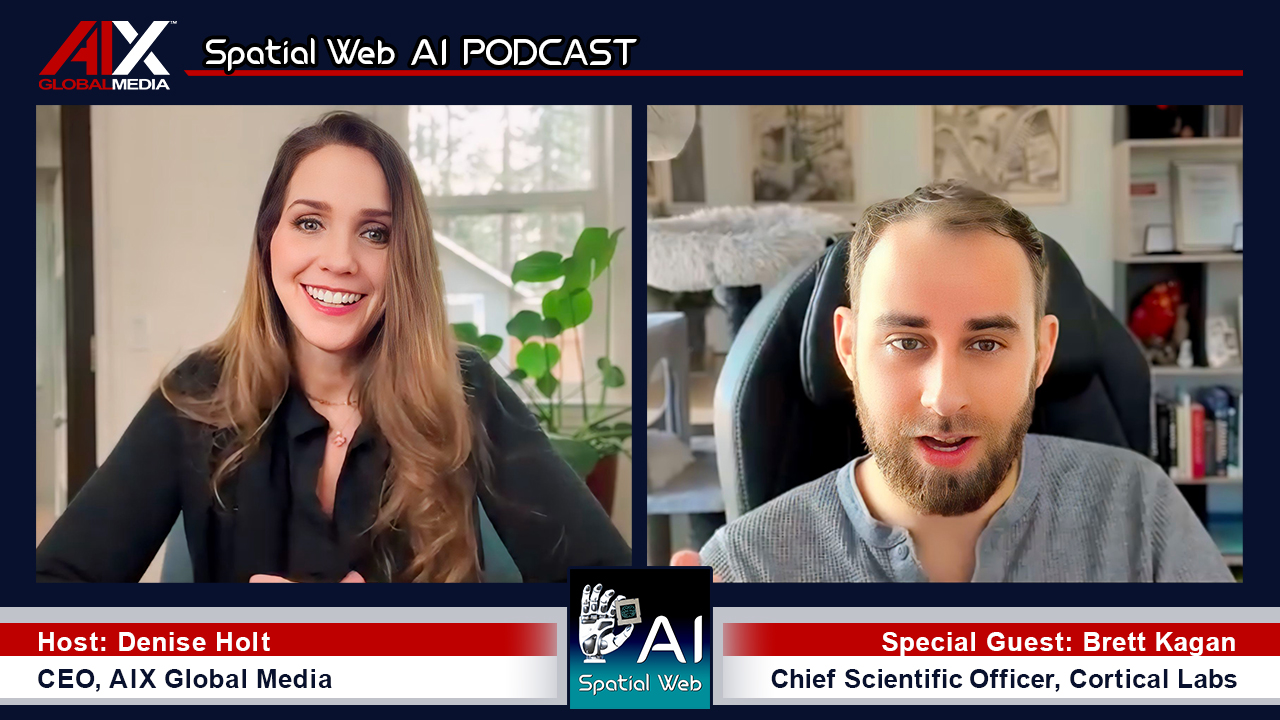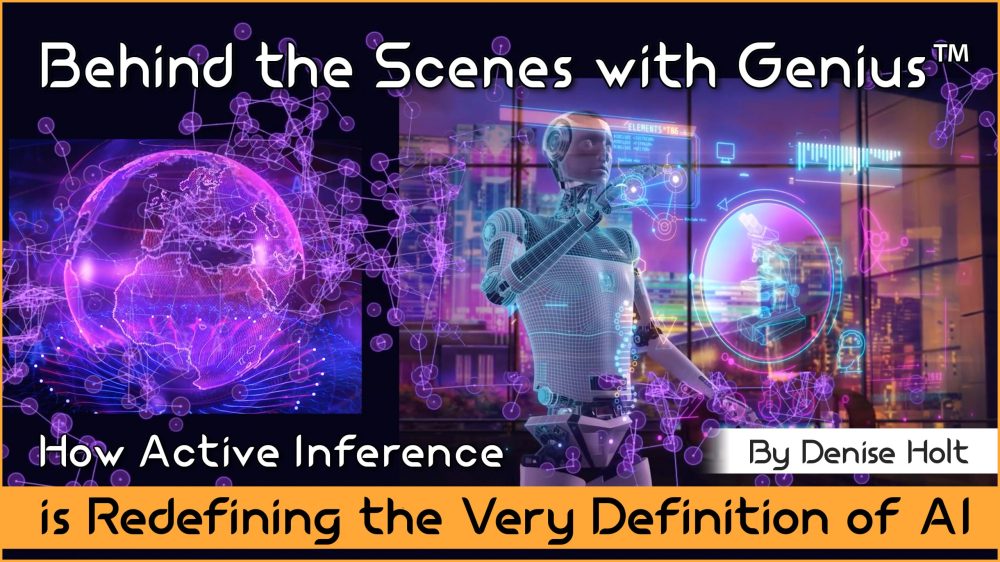
The convergence of two groundbreaking technologies is reshaping how we think about AI, automation, and intelligent systems, affecting every industry...

In a landmark paper published March 29, 2024, in the journal Entropy, a team of visionary researchers from VERSES AI has unveiled a groundbreaking framework that could pave the way for the emergence of a new form of artificial intelligence based on a first-principles approach to multi-scale artificial intelligence, operating on the principles of natural intelligence— one that arises from the dense interactions of networked intelligent agents, rather than from a single, monolithic system. The study, titled:
“Shared Protentions in Multi-Agent Active Inference,”
represents a major milestone in VERSES AI’s ambitious roadmap towards “shared intelligence,” and could have profound implications for the future of AI and human-machine cooperation.
The research, led by Mahault Albarracin and co-authored by Riddhi Jain, Toby St Clere Smithe, Daniel Friedman, Maxwell Ramstead, and renowned neuroscientist Dr. Karl Friston, pioneer of Active Inference and the Free Energy Principle, draws upon insights from philosophy, biology, and mathematics to explore how shared goals and collective intelligence can emerge from the interactions of individual intelligent agents. Central to their framework is the concept of “shared protentions” — mutually attuned expectations about future states and actions that enable agents to coordinate their behaviors towards common objectives.
The philosophical foundation of the work lies in the concept of “inner time consciousness” developed by the early 20th-century thinker Edmund Husserl. Husserl proposed that our subjective experience of the present moment always has a certain “temporal thickness” — it encompasses not just the immediate instant, but also traces of the just-past (which he called “retentions”) and anticipations of the near-future (termed “protentions”). The authors of the new study take this idea of an individual’s temporal experience and extend it to the level of a social group. They introduce the notion of “shared protentions” — the idea that members of a group can develop mutually attuned expectations about future states and actions, which then allow them to coordinate their behaviors.
To translate this philosophical concept into a scientific model, the researchers employ a framework from theoretical biology known as “active inference.” This approach views living organisms as continuously making inferences about the state of their environment and selecting actions that minimize surprises and uncertainty. The authors show how Husserl’s ideas can be mapped onto the components of an active inference model. Sensory inputs correspond to raw “hyletic data,” (impressions that form perceptions), while the inferred causes of those sensations make up what we perceive as our experience. Crucially, the model equips each individual with an internal representation that includes not just their own states, but also those of other group members. This allows the model to capture how individuals infer each other’s mental states and anticipate their actions.
The most innovative aspect of the new framework is its integration of mathematical tools from a field known as category theory. The researchers now express how individuals make decisions using abstract math concepts known as “polynomial functors,” which represent their potential interactions and observations. They then use a technique called “sheaf theory” to stitch together the compatible parts of these individual models. This results in a unified picture of the group’s shared understanding, termed a “consensus topos” by the authors.
Within this formal framework, the “shared protentions” that enable coordinated group action emerge spontaneously as a consequence of each individual’s understanding and reasoning being influenced by the need to maintain consistency with the group. In other words, the underlying alignment of expectations that allows individuals to work together towards common goals arises naturally from the mathematics of the model.
Think of it like a flock of birds flying together. Each bird is constantly adjusting its own movements based on what it sees the other birds doing. It doesn’t need to have a detailed plan or a leader telling it what to do — it just naturally falls into formation by following simple rules and paying attention to its neighbors.
We can also use the example of a sports team, like a basketball team, playing together on the court.
Each player on the team has a mental model of the game — they understand the rules, the objectives, and the general strategy. But more importantly, they also have a sense of what their teammates are likely to do in any given situation. This understanding is built up through hours of practice and gameplay together.
During a fast-paced game, there’s no time for the players to stop and discuss each play in detail. Instead, they rely on their shared understanding and anticipation of each other’s actions. The point guard, for instance, might make a split-second decision to pass the ball to a particular teammate, not because they discussed it beforehand, but because they anticipate that the teammate will be in the right position to receive the pass.
This is a prime example of “shared protentions” in action. Each player’s individual actions are guided by their expectations of what their teammates will do. And these expectations are not just one-way — they’re reciprocal and self-reinforcing. The teammate anticipates the pass because they know the point guard is likely to make it, and the point guard makes the pass because they anticipate the teammate being ready for it.
Over time, this interplay of expectations and actions leads to a highly coordinated style of play, where the team seems to move and think as one unit. And importantly, this coordination emerges not from any one player’s explicit instructions, but from the implicit alignment of each player’s understanding and anticipations.
This is the essence of what the researchers’ mathematical model captures — how shared goals and coordinated action can arise naturally from the interplay of individual minds, guided by the need to maintain a coherent, mutually aligned understanding of the world. It’s a powerful insight into the cognitive underpinnings of teamwork and collective action.
The significance of this work extends far beyond the realm of academic theory. In a post on LinkedIn, Albarracin explained, the paper “sets the stage for VERSES’ Active Inference intelligence roadmap stage S4 of Shared Intelligence.” This stage, which roughly corresponds to what is popularly known as “Artificial Super-Intelligence,” envisions the emergence of planetary-scale, distributed intelligences from the highly coordinated interactions of networked Intelligent Agents. The key insight of the “Shared Protentions” paper is that such collective intelligences are not just a distant dream, but a natural consequence of the principles of Active Inference and the mathematical tools of category theory.
To understand how this works, it’s helpful to step back and consider the basic premise of Active Inference. This framework, rooted in neuroscience and theoretical biology, views Intelligent Agents as constantly making deductions and drawing conclusions about the state of their environment and choosing to act in a way that closes the gap between expectation and reality — refining understanding to better anticipate what will happen.
In the “Shared Protentions” paper, the authors show how this process of inference and action selection can be formally modeled using abstract mathematical objects called “polynomial functors” and “sheaves,” as explained above.
By applying these tools to networks of interacting Intelligent Agents, the researchers demonstrate how individual agents can intuitively align their expectations and coordinate their behaviors, even without explicit communication. In essence, they provide a mathematical recipe for the unspoken emergence of shared goals and collective intelligence from the bottom up.
But what makes this research truly groundbreaking is its integration with VERSES AI’s Hyperspace Modeling Language (HSML). HSML is a common language that enables seamless interoperability between Active Inference Intelligent Agents, humans, and the scores of devices that comprise the Internet of Things (IoT). By programming context into objects and spaces, HSML provides Active Inference Agents with real-time data about their environments, as well as the sensory inputs from IoT devices and robots.
The “Shared Protentions” paper lays the theoretical foundation for translating high-level human directives, encoded in HSML, into the inherent alignments of expectations that guide the cooperative behaviors of Autonomous Intelligent Agents. In other words, it provides a principled way to embed human values and objectives into the very fabric of the Spatial Web, ensuring that the collective intelligences that emerge from it are aligned with our goals and aspirations.
The implications of this research are staggering. As we move towards a future in which Autonomous Intelligent Systems are increasingly integrated into every aspect of our lives, from Smart Cities to healthcare to scientific research, the ability to create cooperative, context-aware intelligences that can seamlessly coordinate their actions in pursuit of common goals will be essential. The “Shared Protentions” paper, in conjunction with the Spatial Web Protocol — HSTP & HSML, offers a roadmap for achieving this vision.
Of course, there are still many challenges to be overcome. This robust, secure, and ethical framework, and the deployment of these technologies will require ongoing collaboration between researchers, policymakers, and the broader public. But the publication of this paper marks a crucial turning point in our understanding of what is possible.
As we stand at the threshold of a new era in artificial intelligence, the pioneering work of Friston, Albarracin, and their colleagues at VERSES AI and the Spatial Web Foundation offers a promising vision of future in which humans and machines can work together in previously unimaginable ways. By cracking the code of shared intelligence and providing the tools to embed the building blocks for it in the very infrastructure of our world, they are laying the foundation for a new paradigm in AI — one that operates with the same mechanics as biological intelligence, and one that could transform our society in ways we are only beginning to imagine.
Explore the future of Active Inference AI with me, and gain insights into this revolutionary approach!
Ready to learn more? Join my Substack Channel for the Ultimate Resource Guide for Active Inference AI, and to gain access to my exclusive Learning Lab LIVE sessions.
Visit my blog at https://deniseholt.us/, and Subscribe to my Spatial Web AI Podcast on YouTube, Spotify, and more. Subscribe to my newsletter on LinkedIn.

Enjoy all of my new articles on Substack. They will always be included with your free subscription.
AND if you choose to opt in for a paid subscription, you will have access to a wealth of extra Active Inference AI news and education materials, and become part of the global conversation of this cutting edge, safe, and trustworthy new approach to AI.
All content for Spatial Web AI is independently created by me, Denise Holt.
Empower me to continue producing the content you love, as we expand our shared knowledge together. Become part of this movement, and join my Substack Community for early and behind the scenes access to the most cutting edge AI news and information.

The convergence of two groundbreaking technologies is reshaping how we think about AI, automation, and intelligent systems, affecting every industry...

On 29 May 2025, the IEEE Standards Board cast the final vote that transformed P2874 into the official IEEE 2874–2025...

Explore the future of agent communication protocols like MCP, ACP, A2A, and ANP in the age of the Spatial Web...

Fusing neurons with silicon chips might sound like science fiction, but for Cortical Labs, it represents what's possible in AI...

Ten years ago, on March 31, 2015, I interviewed Katryna Dow, CEO and Founder of Meeco, to discuss an emerging...

We stand at a critical juncture in AI that few truly understand. LLMs can automate tasks but lack true agency....

VERSES AI 's New Genius™ Platform Delivers Far More Performance than Open AI's Most Advanced Model at a Fraction of...

Go behind the scenes of Genius —with probabilistic models, explainable and self-organizing AI, able to reason, plan and adapt under...

By understanding and adopting Active Inference AI, enterprises can overcome the limitations of deep learning models, unlocking smarter, more responsive,...